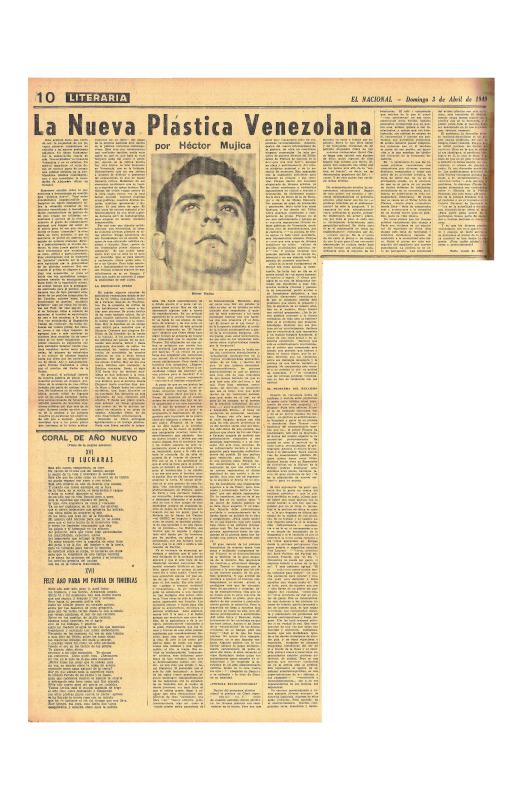This critical review by Guillermo Meneses (1911–78) is among the documents produced as part of the exhibition of works (including the series Las Cafeteras) by Alejandro Otero (1921–90) that opened at the Museo de Bellas Artes de Caracas on January 30, 1949. This exhibition sparked some controversy, mainly because some artists, such as Pedro León Castro, claimed they did not understand it. In addition to Otero, the other participants in the exhibition were César Rengifo, Domingo Maza Zabala, Pascual Navarro, and J. R. Guillent Pérez.
Though not explicitly controversial, this review by Meneses reflects his broad judgement and his understanding of how young Venezuelan artists who had been living in Paris since the mid-1940s were influenced by the life experience and creative process involved. Meneses refers to key aspects of that experience, such as the founding of the Los Disidentes group in Paris in 1950, and Otero’s unquestionable importance as his work heralded the beginning of the abstract period in Venezuelan art. This review makes no concessions to moral prejudices; Meneses is fully aware that, at that time, Caracas was mainly populated by provincial types who were not particularly well educated, so he uses his review to inform and to explain certain essential aspects of Abstract Art which, in his opinion, is a “pure art and, perhaps for that very reason, one that is steeped in humanity.” Describing how many local painters reacted to Otero’s painting, Meneses writes: “Among the guys, Otero’s arrival has been explosive;” and “There is no shortage of artists who feel that their role as a painter has been denied by the brilliant appearance of Otero’s works.”
To read other critical articles about Otero’s work, see the article by J. R. Guillent Pérez, one of the members of the Los Disidentes group, “Realidad e irrealidad: El postigo de Alejandro Otero” [doc. no. 1172158]; the essay by Roberto Guevara “La vertical vibrante de Maracay, 1968” [doc. no. 1168201]; the article in the catalogue for the exhibition “Alejandro Otero” (1949) by François Sego, entitled “Alejandro Otero y la crisis de la pintura moderna” [doc. no. 850732]; the essay by the journalist Héctor Mujica “La nueva plástica venezolana” [doc. no. 850512]; and the essay by the writer Elizabeth Schon “Los coloritmos de Alejandro Otero” [doc. no. 1172142].





